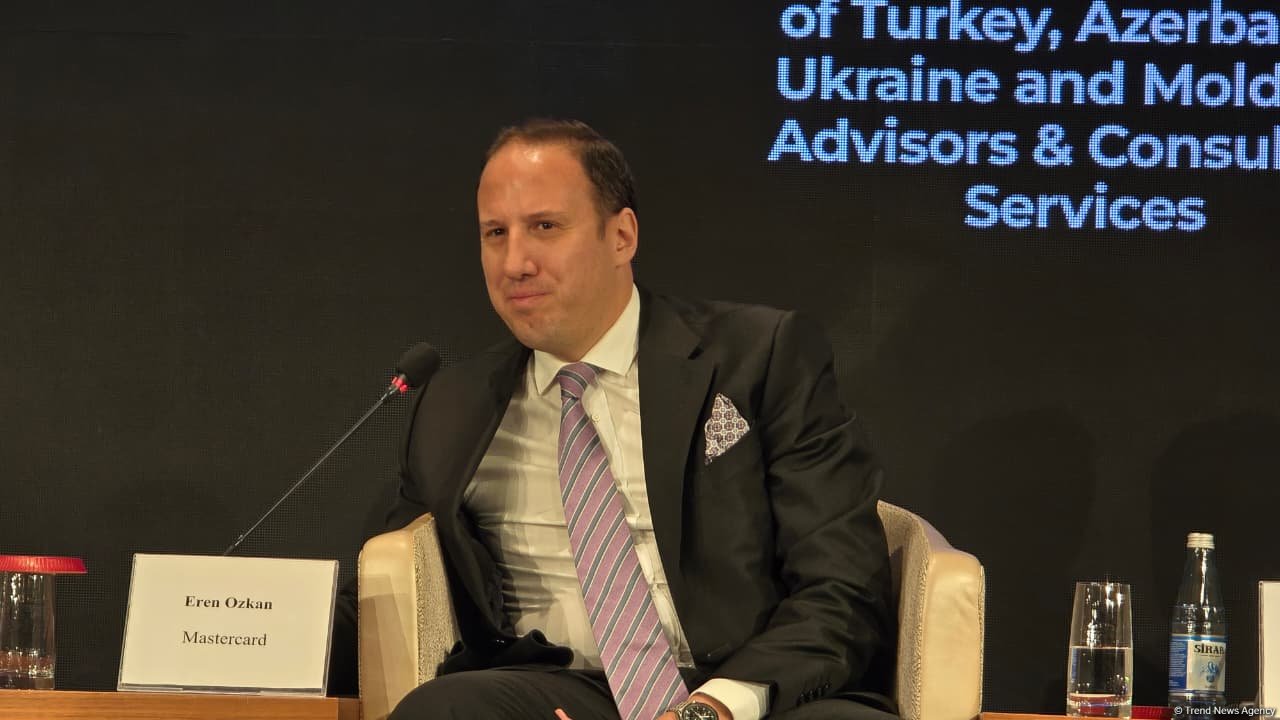BAKU, Azerbaijan, November 19. Artificial intelligence will handle a big chunk of customer service by 2030, which is just five years from now, and this will really shake up the banking world, head of Mastercard's consulting services cluster in Türkiye, Azerbaijan, Ukraine, and Moldova, Eren Ozkan said, Trend reports.
He made the remark at the 9th International Banking Forum held today in Baku.
Eren Ozkan emphasized that banks currently invest around $600 billion annually in the development of artificial intelligence worldwide: "These investments include both technological developments and mergers and acquisitions (M&A). However, the bulk of investments in the banking system are directed toward business codes.
When artificial intelligence first appeared on the market, it was perceived as a concept that increased efficiency, allowing back-office and middle-office operations to be performed at lower cost and without increasing human resources. But in fact, artificial intelligence is most beneficial in the service sector, especially in customer service. Many banks have already started using chatbots both globally and in our region, integrating them into their mobile applications.
Ozkan noted that similar artificial intelligence technologies are already being used in branches: “By 2030, that is, within the next five years, a significant portion of customer service will likely be carried out using artificial intelligence, and this will lead to serious changes in the banking sector.”
''The second important topic is embedded finance and “banking as a service.” There are currently about 25,000 banks operating worldwide. As Mastercard, we work with almost all of these banks. However, the number of companies that are not banks but simply provide financial services exceeds 50,000. That is a lot. Many companies can provide loans, issue cards, and provide various banking services without even being banks.
The reason for this is very simple: the average bank user interacts with their bank 200 times a month. This could be a card transaction, a product request, access to a mobile app, or a visit to a branch. But the same customer may also interact with retailers, telecom operators, marketplaces, and thousands of transactions with airlines. This leads to non-banking sectors beginning to understand how to benefit from the banking sector. The result is “embedded finance,” which is the ability to provide banking services outside of the banking environment. This economy is growing rapidly, and according to forecasts by Wells Banking and other companies, by 2030, about 30% of banking services will be accounted for by “embedded finance,” he added.
Retail and corporate banking directly serve individuals and companies, but banks have a significant infrastructure. A new source of income can be created by opening up this infrastructure to companies that are just getting acquainted with financial technologies and need it. On the one hand, this may seem like a threat to banks, but in fact, it also offers significant potential for generating income," he emphasized.
He noted that another problem is digital assets and tokenization. According to O. Eren, Bitcoin appeared in 2008 and was initially used mainly for investment, but stablecoins, tokenized deposits, and other new products began to play an important role in everyday banking services, “transactional banking”: "Currently, about 3 percent of total global GDP consists of tokenized and digital assets, amounting to about $3.5 trillion. This figure is projected to reach $10 trillion by 2030. The digital economy is currently growing five times faster and is one of the areas with the greatest impact on banking. This is because the tokenization of many banking products increases reliability, speed, and financial accessibility. It will become one of the most influential trends in the coming years."
The fourth important trend is the emergence of ESG (environmental, social, and governance), sustainable development, and environmentally friendly products. Although this concept has been around for many years, it was previously perceived as a requirement imposed by banks for compliance purposes. But now, ESG and sustainable development have become central elements of banking activities. Currently, many products are linked to ESG. For example, green bonds and credit products from organizations such as the World Bank and the European Bank for Reconstruction and Development are also linked to ESG. Investments in ESG and sustainable development are important for progress in the banking sector. They also contribute to the development of the world.
Mastercard conducts surveys among customers around the world. One of the questions is: why do you choose the bank you want to work with? According to recent research, 42 percent of US residents choose a bank based on its ESG index. This demonstrates the importance of ESG in customer-centric strategies and loyalty programs," Mastercard's representative concluded.







